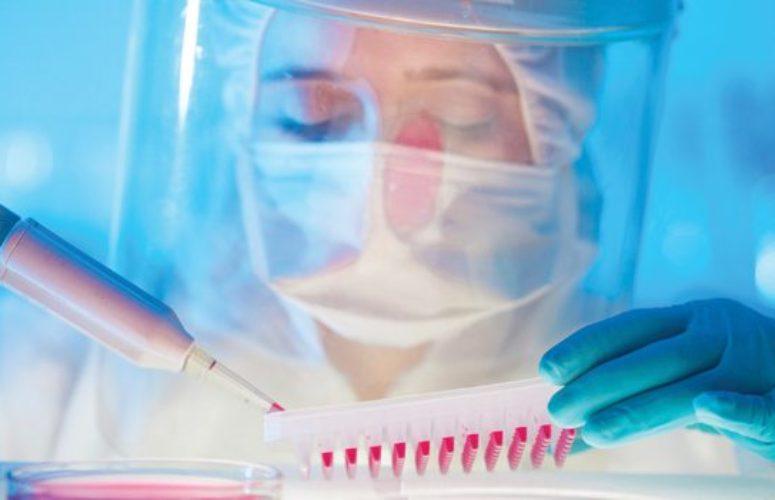
Historic Progress
By Eric C. Peterson, Contributing Writer On Nov 25, 2014The war on cancer is being waged on many fronts. In fact, there are approximately 771 new vaccines and medicines currently being developed, according to the Pharmaceutical Research and Manufacturers of America (PhRMA). Of those, 98 are for lung cancer, 87 for leukemia, 78 for lymphoma, 73 for breast, 56 for skin and 48 for ovarian cancers.
In New Jersey, the Rutgers Cancer Institute of New Jersey (RCINJ), one of 41 nationally-designated cancer centers, research activity focuses on three areas. Two are basic science (laboratory) and clinical science. “We have from 200 to 250 clinical trials going on at any time,” says Robert S. DiPaola, the center’s director.
The third area is population science, which looks at areas that might have an incidence of a particular cancer. RCINJ has also partnered with the Genetics Institute of NJ to study tissues and genomic sequences to isolate, focus and understand the abnormal genes.
At Rowan University’s Graduate School of Biomedical Science, Dr. Randy Strich recently received a $1.2-million grant from the National Institute of General Medical Sciences (NIGMS) to study the protein Cyclin-C, whose normal job is to regulate gene expression/transcription in the nucleus. “In response to cellular damage, it leaves the nucleus,” he explains. “We’re looking for ways to manipulate Cyclin-C’s function to trigger this cell-death pathway that will target tumor cells.”
Also at Rowan, Tabbetha Dobbins of the Department of Physics & Astronomy, is studying a non-clinical technique called photothermal therapy (PTT), a follow-on technique to a clinical study called photodynamic therapy. “The difference is the latter uses a particular molecule that, when irradiated by a laser, creates a free radical that kills the nearby tumor cell,” she explains.
Instead of molecules, PTT injects gold nanoparticles. “When the laser is fired at the site, the gold particles heat up, giving off heat to kill nearby tumor cells,” she says. “We’re also planning to study the effects of heat on surrounding proteins.
“There is growing interest in the physics of life sciences at the National Science Foundation, of applying physics to the study of cancer,” Dobbins says.
In general, the way pharma companies and universities interact has changed dramatically, Strich notes.
And among biopharma companies, Eisai is seeking approval for the anticancer agent Lenvatinib as a treatment for progressive radioiodine-refractory, differentiated thyroid cancer, notes Chief Innovation Officer Dr. Takashi Owa. An oral multiple receptor tyrosine kinase inhibitor, it’s also being studied for non-small cell lung cancer and other solid tumor types.
For Eisai, the global company’s Woodcliff Lake campus serves as its clinical development headquarters. “We have people here managing all clinical programs —leading our global clinical development and communicating with our people in the European Union and Asia,” Owa says.
Precision oncology treatment is driving Novartis Oncology’s practice. “Precision oncology is how we describe the evolving understanding of how cancers develop on a genomic level and our ability to develop drugs focusing on those targets,” says Bill Hinsaw, executive vice president and head, US Novartis Oncology. “By identifying the underlying cause of the cancer, we’re able to develop drugs that specifically target that mechanism and more effectively treat the disease. These therapies are directed at the cancer-causing mutation rather than killing cells, so they tend to have fewer side effects.”
Also, Novartis is developing “truly individualized treatment approaches, such as chimeric antigen receptor [CAR] T-cell technology, which reprograms a patient’s white blood cells to hunt and kill cancer cells,” Hinshaw adds. All together, “we have 24 pivotal clinical trials underway in blood and solid tumor cancers.”
Current drugs in Novartis’ product line include Afinitor for the treatment of neuroendocrine pancreatic tumors; Tasignas for the treatment of chronic myeloid leukemia; and Zometa for adults with advanced bone malignancies. And earlier this year, the company received approval for Zykadia, the only FDA-approved therapy for patients with ALK+ metastatic non-small cell lung cancer.
Eisai’s current product line includes: Aloxi, a supporting care drug “relating to bone marrow toxicity tied to cancer,” according to Dr. Owa; Halaven, for the treatment of metastatic breast cancer; and Fragmin, an injectable anti-clotting agent.
To say that the cancer R&D climate has changed dramatically is an understatement. For Dr. Owa, “today, cancer genetics and genomics are very much accepted at the clinical level. Cancer-specific gene mutations can be detected, and physicians and patients are better able to select the right drug.”
“Cancer research is heading to rational drug design – more biologically-based targets and therapies based on the tumor’s biology,” Strich says. “Chemotherapy is a poison of some sort, and people are moving to try to design compounds affecting specific proteins in a pathway. Cancer research is going away from DNA-damaging agents.”
“More drugs getting approved now are more targeted, with an emphasis on immune modulation,” DiPaola says. “It’s being done in two main ways: Drugs that modulate the immune system by turning off negative regulators, and vaccine therapies given as a protein or exposure, like a viral vaccination, but targeting proteins predominantly in the cancer.”
And compared to 20 to 30 years ago, “a higher percentage of patients, 69 to 70 percent, are in remission,” he says. “We are winning some of the war, but still have a long way to go.”
“In its war on cancer, research-driven life sciences, including companies in New Jersey, have made historic progress,” says Dean J. Paranicas, president/CEO of the HealthCare Institute of New Jersey (HINJ). “With steady advancements in medicines, diagnostics and medical technologies, survival rates are up dramatically since the mid-1970s, and the US cancer rate is down 20 percent since its all-time high in 1991.”
“Biopharmaceutical breakthroughs have contributed to a 22 percent drop in American cancer deaths over the last two decades,” concurs Debbie Hart, president/CEO of
BioNJ. “Since 1990, patients have gained over 50 million additional years of life, translating into $4.2 trillion in additional economic activity, with 83 percent of life expectancy gains attributable to new treatments.”
Challenges remain and “the battle continues,” Paranicas says. On the research front, “gene mutations are becoming a more popular target, and the number of potential target mutations is actually limited,” Owa says. “Eventually, the R&D landscape could become harder.”
For treatment, “while some cancers are currently curable, there are still a lot of difficult cancer types,” Owa says.
Another major challenge is the “low percentage of adult patients who participate in clinical trials,” Hinshaw says. “Patient participation plays a vital role in developing novel therapies, yet we continue to see a participation rate of 2 to 3 percent for newly diagnosed adult patients.
“In an effort to increase participation, Novartis Oncology is piloting an effort called the Signature clinical trial program, which flips the traditional clinical research model by bringing the study protocol to patients where they are being treated,” Hinshaw notes.
And while the Rutgers University Foundation recently received a $10-million anonymous pledge “to help fuel the bridge between the technology end of the Genetics Institute and the clinical operation at the Cancer Institute, in the big picture, the challenge is always funding,” DiPaola concludes.



